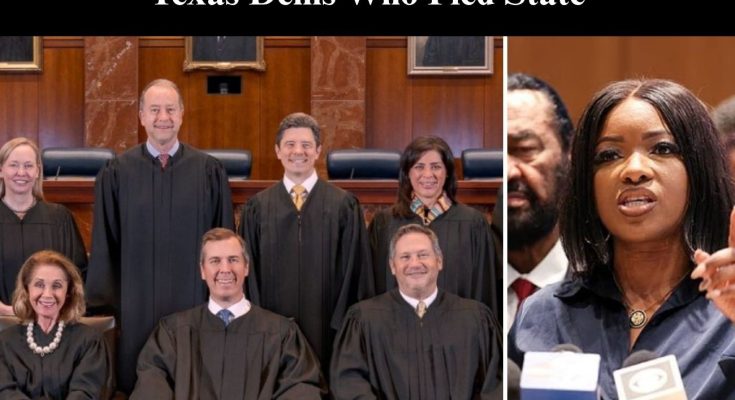With less than a week before candidates can begin filing for the 2026 elections, a panel of three federal judges in El Paso has yet to decide whether Texas will use its newly approved congressional maps or revert to the existing 2021 boundaries.
The judges held a 10-day hearing in October to review the legality of the new district lines, and their ruling will determine which maps candidates must use when filing with their political parties and the Texas Secretary of State’s Office. The filing deadline to appear on the ballot is December 8.
Once a decision is handed down, the case is expected to head straight to the U.S. Supreme Court on appeal, CBS News reported.
The Texas Legislature approved the new congressional maps during a special session this summer, after a dramatic standoff in which House Democrats fled the state for nearly two weeks in an attempt to block the vote. When the session reconvened on August 23, Republicans swiftly passed the maps, redrawing districts in a way that could net the GOP as many as five additional congressional seats.
Democrats, joined by groups including the NAACP and LULAC, quickly filed suit, claiming the maps amount to racial gerrymandering. Republicans have firmly rejected that accusation, maintaining that the redistricting was driven by political strategy, not race, CBS added.
In North Texas, three Democrats currently hold congressional seats: Rep. Jasmine Crockett of Dallas in the 30th District, Rep. Julie Johnson of Farmers Branch in the 32nd, and Rep. Marc Veasey of Fort Worth in the 33rd. All three have announced plans to seek re-election.
Under the proposed 2025 redistricting maps, North Texas would be left with just two Democratic-majority districts, as the 32nd would shift to a Republican-leaning seat. Johnson has said she will run in the 33rd District, while Veasey has confirmed he will run for Congress again but hasn’t said where. Crockett has indicated she’ll either remain in the 30th or move to the 33rd, depending on where her residence falls under the new lines.
Meanwhile, Texas House Democrats made national headlines this summer when they fled the state to stall a vote the new congressional redistricting effort by Republicans.
Republican Gov. Greg Abbott petitioned the Texas Supreme Court to remove their caucus leader from office.
Now, that high-stakes case is before the state justices and could set a precedent for any lawmaker in the future who attempts to flee the state to avoid voting on a measure.
Abbott touted the court’s decision as a victory, posting on social media that the briefing schedule brings the “ring leader of the derelict Democrats … closer to consequences.”
“Just because some of the runaway Democrats returned to Texas does not mean they get to escape the consequences of abandoning Texas and abdicating their responsibilities,” said Texas Attorney General Ken Paxton in September.
“Crossing back over state lines does not erase weeks of silencing their own districts and forfeiting their offices. These Democrats chose to put political theater above their constituents’ voices. If you deliberately, openly, and blatantly refuse to show up to work for weeks on end, you lose your job,” Paxton added.
The Court has combined Abbott’s lawsuit against Houston Rep. Gene Wu, chair of the House Democratic Caucus, with a similar case brought by Attorney General Paxton, who seeks to oust Wu along with 12 other Democratic members.
Although Abbott and Paxton initially disagreed over which office had the legal authority to file such suits, Paxton said that he now looks forward to working alongside Abbott to “hold these cowards accountable.”
On Aug. 3, dozens of House Democrats left Texas to halt the Legislature and block passage of the GOP’s proposed congressional map. The redistricting push came under pressure from President Donald Trump, who has called for adding five Republican seats to bolster the party’s slim House majority ahead of the 2026 midterms.
Since then, a number of other GOP-controlled states have conducted redistricting to add Republican seats to the U.S. House.

